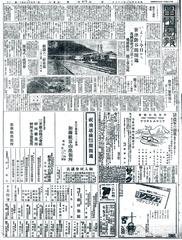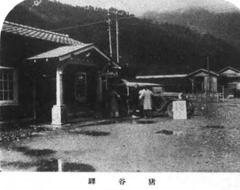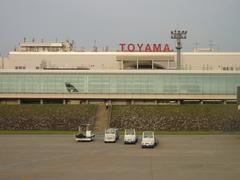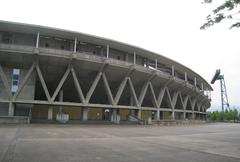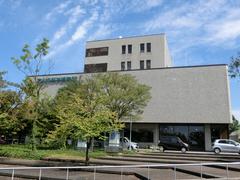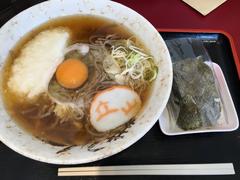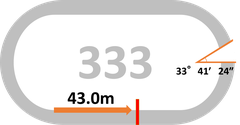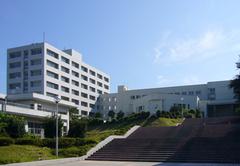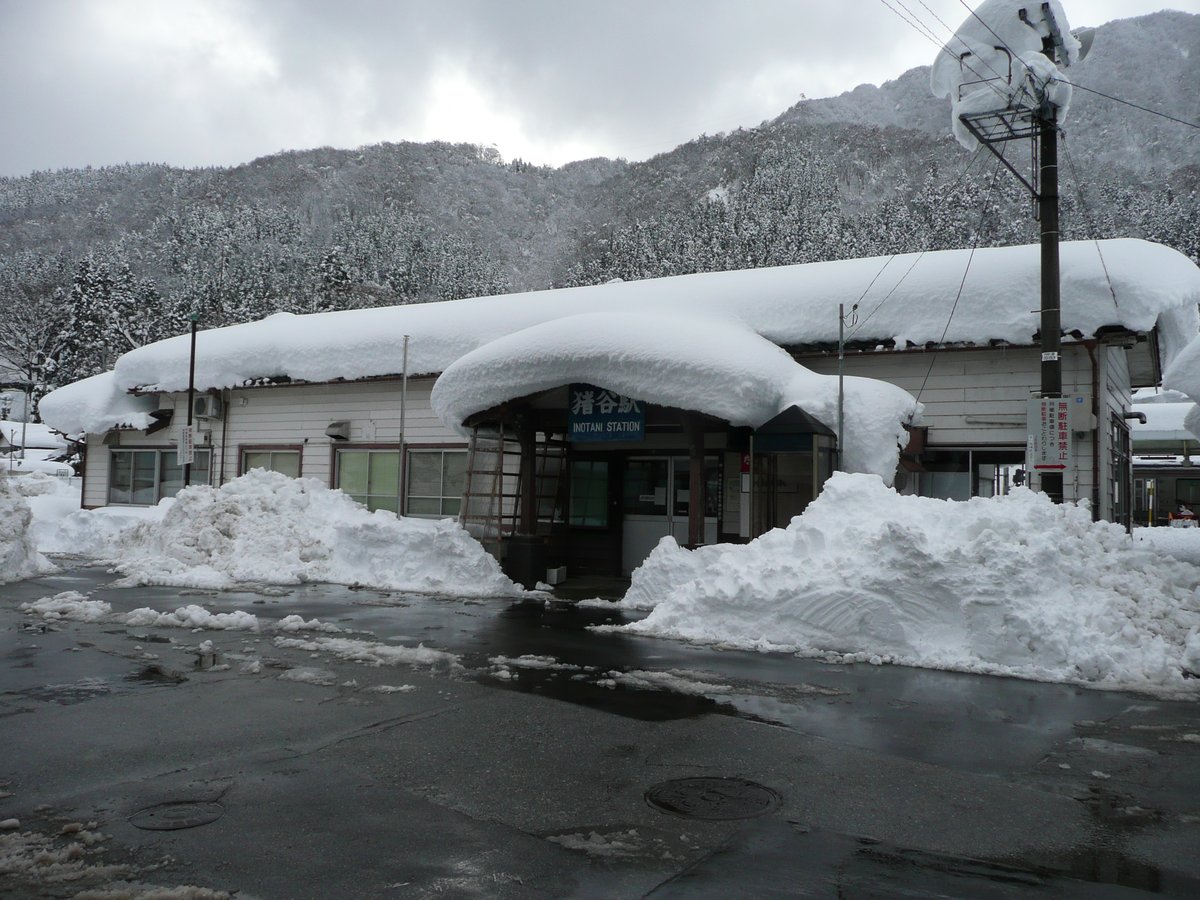
Inotani Station: Visiting Hours, Tickets, Travel Guide, and Historical Context in Toyama Prefecture
Date: 15/06/2025
Introduction
Nestled in the scenic mountains along the Toyama and Gifu prefectural border, Inotani Station (猪谷駅) is both a vital railway junction and a gateway to some of Japan’s most treasured natural and cultural sites. Serving as a pivotal transfer point on the JR Takayama Main Line and the operational boundary between JR West and JR Central, Inotani Station connects remote communities to urban centers while preserving a legacy that stretches back to the Edo period. Travelers will find not only functional railway infrastructure but also access to breathtaking landscapes, historical museums, and UNESCO World Heritage villages. This guide offers comprehensive information on visiting hours, ticketing, accessibility, nearby attractions, and the region’s historical significance, ensuring you make the most of your journey through Toyama Prefecture.
Contents
- Overview & Historical Background
- Inotani Station’s Operational Role
- Visiting Hours, Ticketing, and Accessibility
- Getting to Inotani Station
- Major Nearby Attractions
- Local History and Cultural Heritage
- Visitor Tips and Etiquette
- Frequently Asked Questions (FAQ)
- Summary and Recommendations
- Sources & Further Reading
Overview & Historical Background
A Strategic Mountain Gateway
Inotani Station is more than a train stop—it is a living testament to the region’s historical significance. During the Edo period, this area housed the Nishi-Inotani Sekisyo (Inotani Barrier), established in 1641 as a checkpoint to regulate trade and travel between the Etchu (Toyama) and Hida (Gifu) provinces. The checkpoint played a crucial role in the economic, administrative, and security systems of the time, operating until 1872. It monitored movement of goods such as rice, salt, and fish, and enforced feudal travel restrictions (Toyama Museums).
The region’s deep history is preserved at the Inotani Sekisyokan Museum, where visitors will find Edo-period travel passes, tax ledgers, and religious artifacts, including expressive wooden statues carved by the monk Enku. The museum also features a reconstructed “Kago no Watashi” basket ferry, once used to cross the Jinzu River—a nod to both the ingenuity and hardship of travel in mountainous Japan (Toyama Museums).
Inotani Station’s Operational Role
Inotani Station is a unique operational hub. It is the transition point between JR West (to Toyama) and JR Central (to Takayama/Nagoya), requiring crew changes for both local and limited express services such as the “Wide View Hida.” This seamless coordination is a hallmark of Japan’s precise railway system (Tokyo Weekender). The station’s simple, accessible layout ensures quick and easy transfers, supporting both daily commuters and travelers venturing into the Japanese Alps.
Visiting Hours, Ticketing, and Accessibility
Visiting Hours
- Inotani Station: Unattended, but accessible during train service hours (approximately 6:00 AM–10:00 PM). The actual building may be closed outside these times, but platform access follows the train schedule.
- Inotani Sekisyokan Museum: Open daily 9:00 AM–5:00 PM (last admission 4:30 PM), closed Mondays and national holidays; check for seasonal variations.
Ticketing
- Tickets: Purchase in advance at major stations or via automated machines. Major IC cards such as ICOCA and TOICA are accepted; Japan Rail Pass is valid across both JR West and JR Central sections.
- Museum Admission: 300 yen (adults), 150 yen (children), free for local residents. Tickets are sold on-site.
Accessibility
- Station: Step-free access via level crossing; island platform with basic amenities. No elevators or escalators.
- Museum: Partially accessible; some exhibits involve uneven terrain. Contact in advance for assistance if needed.
Getting to Inotani Station
- By Train: Served by the Takayama Main Line. From Toyama City, it’s about 2 hours; from Takayama, about 50 minutes. Trains are less frequent in rural sections—check schedules in advance (Japan Travel Navitime).
- By Car: Limited parking is available; public transport is recommended due to rural access.
Major Nearby Attractions
Nature & Scenery
- Jinzu River: Enjoy serene riverside walks and cherry blossom viewing in spring.
- Koitofudo Falls: A picturesque local waterfall, ideal for hiking and nature photography (Image Earth Travel).
- Tateyama Kurobe Alpine Route: Spectacular mountain journey with cable cars, buses, and the iconic snow corridor. Open mid-April to November (Sugoii Japan).
Cultural & Historical Sites
- Inotani Sekisyokan Museum: Preserves Edo-period checkpoint history and local artifacts.
- Gokayama and Ainokura: UNESCO-listed villages with traditional gassho-zukuri farmhouses (Sugoii Japan).
- Takayama: Famous for Edo-period streets, morning markets, and the Takayama Festival (Japan Guide).
- Toyama City: Offers Toyama Castle, Glass Art Museum, Kansui Park, and renowned seafood cuisine (Live Japan).
Local History and Cultural Heritage
Toyama Prefecture’s rich heritage encompasses ancient archaeological finds, religious pilgrimage routes to Mount Tateyama, and a history of innovation in medicine and flood control (Toyama Cultural Heritage). The red Terazu Bridge near Inotani is not only a scenic landmark but also a symbol of spiritual passage in local tradition.
The presence of Enku’s carvings and the checkpoint’s administrative relics at the Sekisyokan reflect the area’s deep religious and artistic roots (Toyama Museums).
Visitor Tips and Etiquette
- Transfers: Allow 5–10 minutes for train transfers, especially with luggage.
- Amenities: Bring snacks and water; facilities are limited at Inotani.
- Best Seasons: Spring (cherry blossoms) and autumn (foliage) are ideal; winter brings beautiful snowscapes but may disrupt train schedules.
- Customs: Observe quiet in trains and stations; greet locals politely.
- Guided Tours: Available seasonally at the museum; check official websites for updates.
Frequently Asked Questions (FAQ)
Q: What are Inotani Station’s visiting hours?
A: Station access aligns with train schedules (6:00 AM–10:00 PM). The Sekisyokan Museum is open 9:00 AM–5:00 PM, closed Mondays and holidays.
Q: Can I buy tickets at Inotani Station?
A: The station is unattended; purchase tickets in advance or use IC cards.
Q: Is Inotani Station wheelchair accessible?
A: Yes, via level crossing, but facilities are basic.
Q: What are the top nearby attractions?
A: Jinzu River, Koitofudo Falls, Tateyama Kurobe Alpine Route, Gokayama, Takayama, Toyama Castle.
Q: Are guided tours available?
A: Occasionally at the museum—check the museum’s website or local tourism info.
Summary and Recommendations
Inotani Station stands as both a practical transport hub and a window into Toyama’s historical and cultural richness. Its role as a checkpoint in the Edo period and a boundary point in modern railway operations exemplifies the area’s enduring significance. The surrounding landscapes, preserved heritage, and proximity to famous attractions make it a rewarding destination for travelers seeking authenticity and tranquility.
When planning your visit:
- Consult official JR schedules to time your journey.
- Consider spring or autumn for optimal scenery.
- Explore the Sekisyokan museum for a deeper historical understanding.
- Use Toyama as a base for accommodation and regional travel.
For real-time schedules, travel tips, and multimedia content, download the Audiala app and check official tourism websites.
Visual Highlights
- Inotani Station platform with mountains in the background (alt: “Inotani Station platform surrounded by mountains”)
- Jinzu River with cherry blossoms (alt: “Jinzu River near Inotani Station with cherry blossoms”)
- Reconstructed Edo-period checkpoint at Sekisyokan Museum (alt: “Reconstructed Edo-period checkpoint near Inotani Station”)
- Wide View Hida train on the Takayama Main Line (alt: “Wide View Hida train near Inotani”)
Sources and Further Reading
- Tokyo Weekender: Japanese Train History
- Toyama Cultural Heritage
- Toyama Museums: Inotani Sekisyokan Museum
- Image Earth Travel: Inotani’s Koitofudo Falls
- Japan Guide: Takayama Main Line
- Japan Travel: Toyama Festivals
- Sugoii Japan: Toyama
- Live Japan: Toyama Castle & Attractions
- Snow Monkey Resorts: Things to Do in Toyama
- Japan Travel Navitime: Train Timetables



